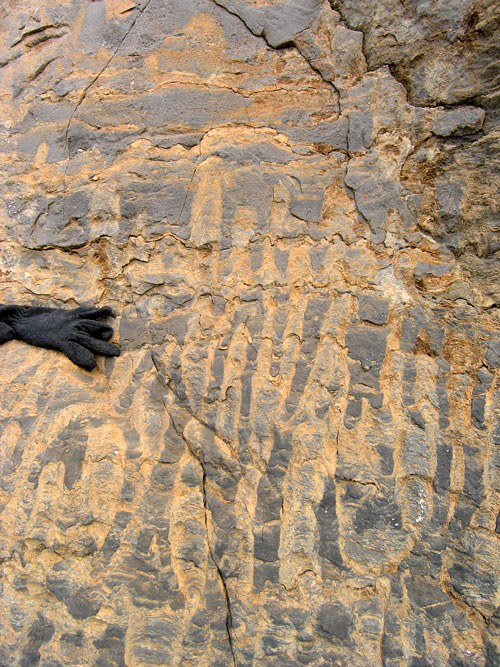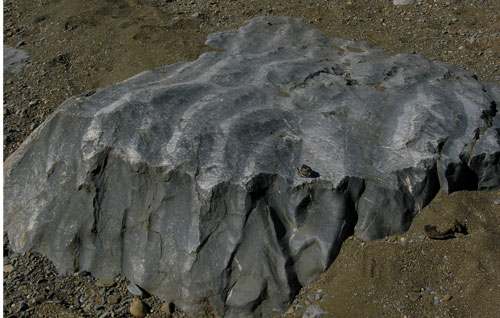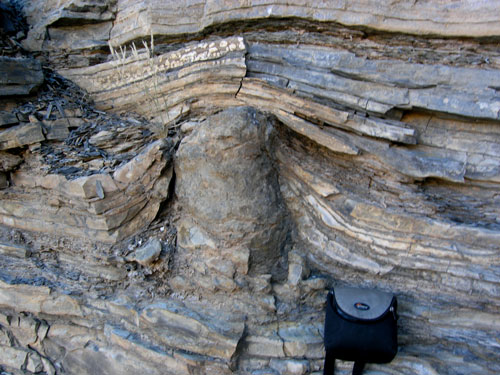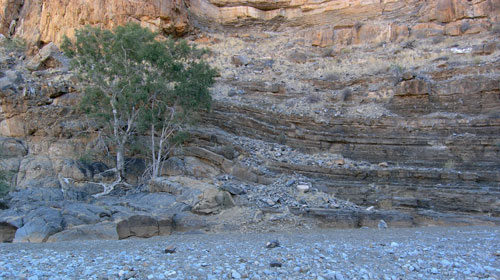Some of the more massive limestone beds in the Nama group are chock full of stromatolites, the remnants of sizeable Precambrian algal reefs.


Technically, stromatolites are not true fossils, because the mineralised layers are not directly precipitated by the photosynthetic algal mats whose growth they record. Instead, accumulating sediment particles (in these cases, inorganically precipitated calcium carbonate) bind to, and are cemented together by, mucus produced by the algal colonies, which continuously grow upwards to avoid being smothered and cut off from the sunlight.
In addition to the large reefs or ‘bioherms’ we saw, with entire cliff-faces filled with columnar stromatolites, we also saw some smaller carbonate mounds.


The way that overlying sediment layers are draped over these mounds indicates that they grew above the sediment surface and were then buried. It was hard to be sure (all the limestone had been recrystallised), but we guessed that these were isolated stromatolite reefs, perhaps in slightly deeper water, which grew for a short time before being overwhelmed by an increase in the sediment supply, or perhaps a rise in sea level.
Stromatolites have been found in some of the most ancient rocks on the planet – some have been reported in 3 billion year old rocks close to where I went sampling in KwaZulu-Natal, and from 3.5 billion year-old rocks in Australia. However, the weird mix of biological and sedimentary processes that result in stromatolite formation, and the fact that the mat-forming organisms themselves are not preserved except in very exceptional circumstances, have led to debates over whether these very ancient examples do in fact represent evidence of early life. The oldest examples tend to consist of simple dome-like structures, so could conceivably have been formed by inorganic processes alone*. Younger stromatolites often exhibit much more complicated growth patterns, such as the branching behaviour you can hopefully see in my first picture, which is much more suggestive of a biological influence.
However, despite their ancient pedigree, the last 550 million years have not been a good time to be a reef-building alga: there are few more recent examples of the extensive stromatolite bioherms which are so prominent in the Nama Group. This rapid decline has been linked to the emergence of large and active grazing animals across the Cambrian boundary; this might explain why the only places where stromatolites thrive nowadays are extreme environments like the hypersaline Shark Bay in Western Australia.
*although this recent Nature Paper by Allwood et al. argues that the Australian examples are in fact, quite diverse and complicated.



Comments (3)
Links (1)-
Pingback: Snowball Earth no problem for sponges |